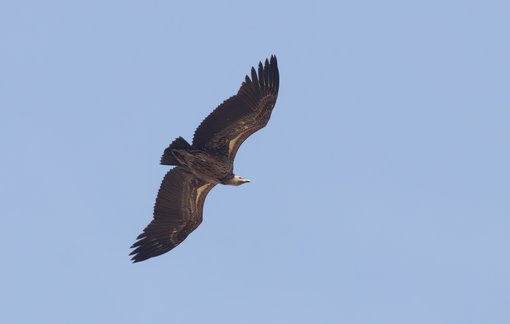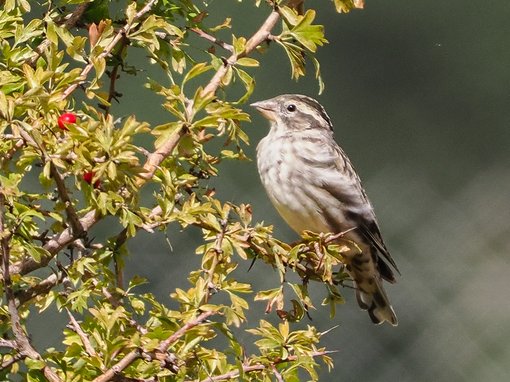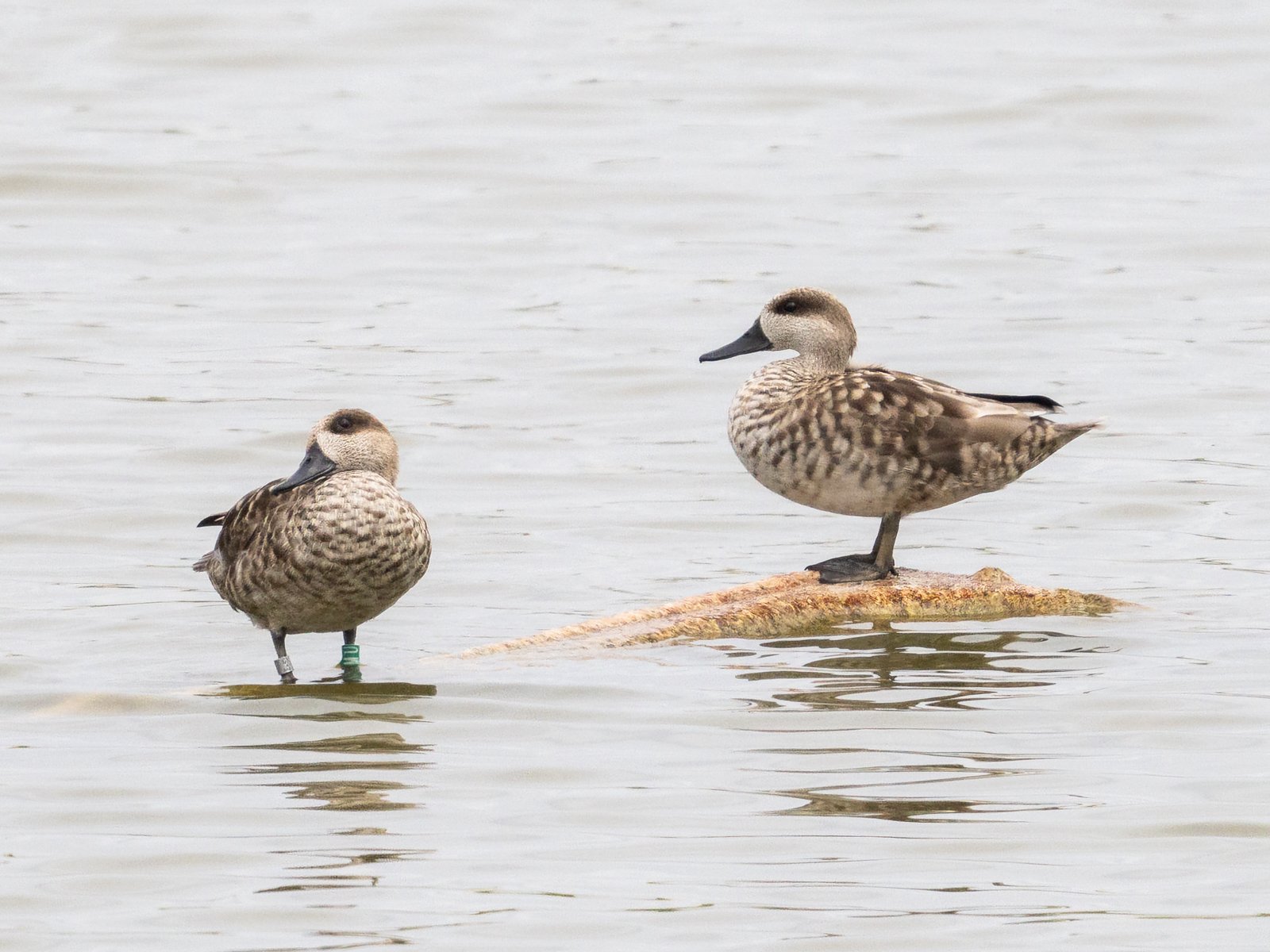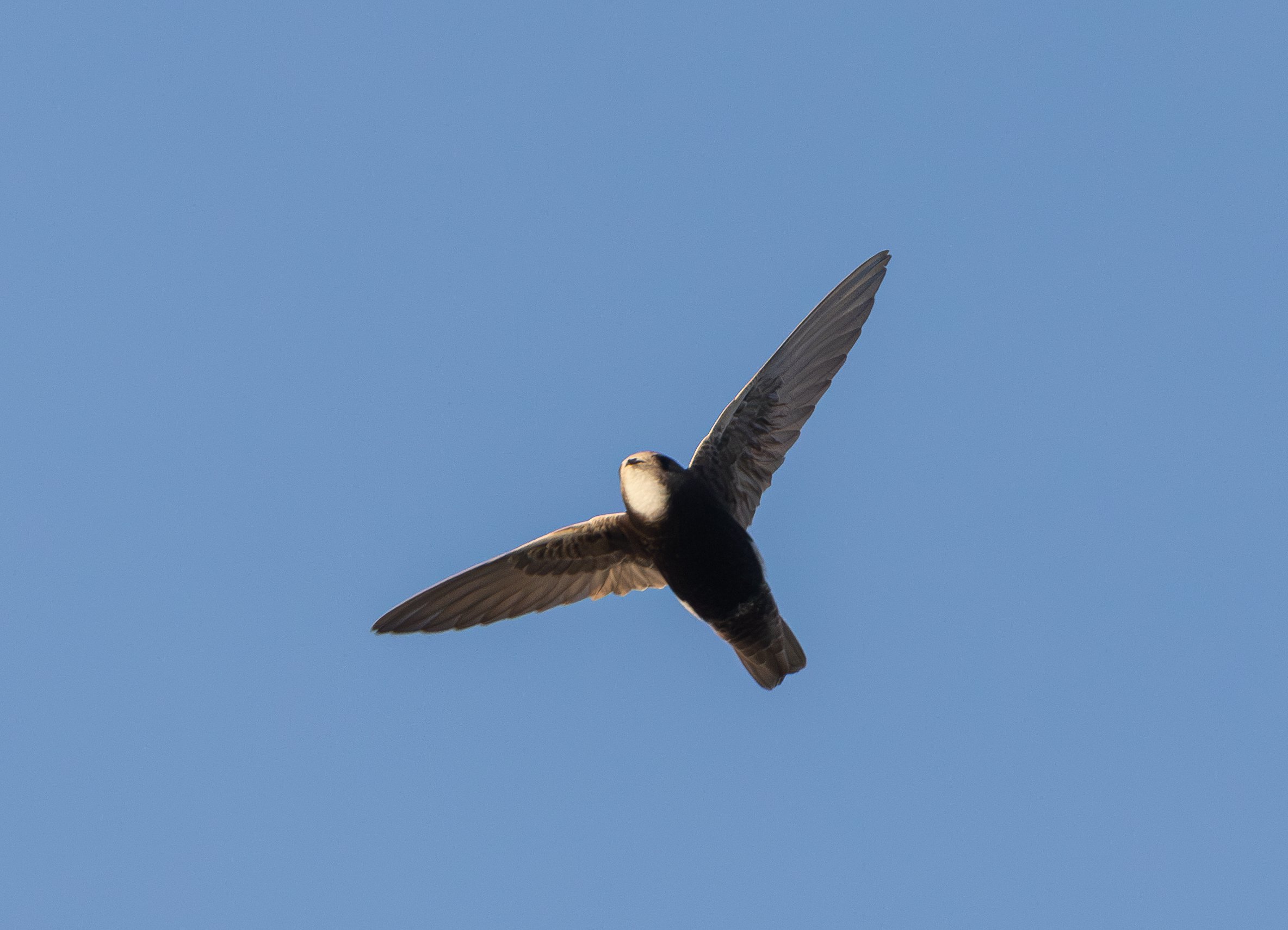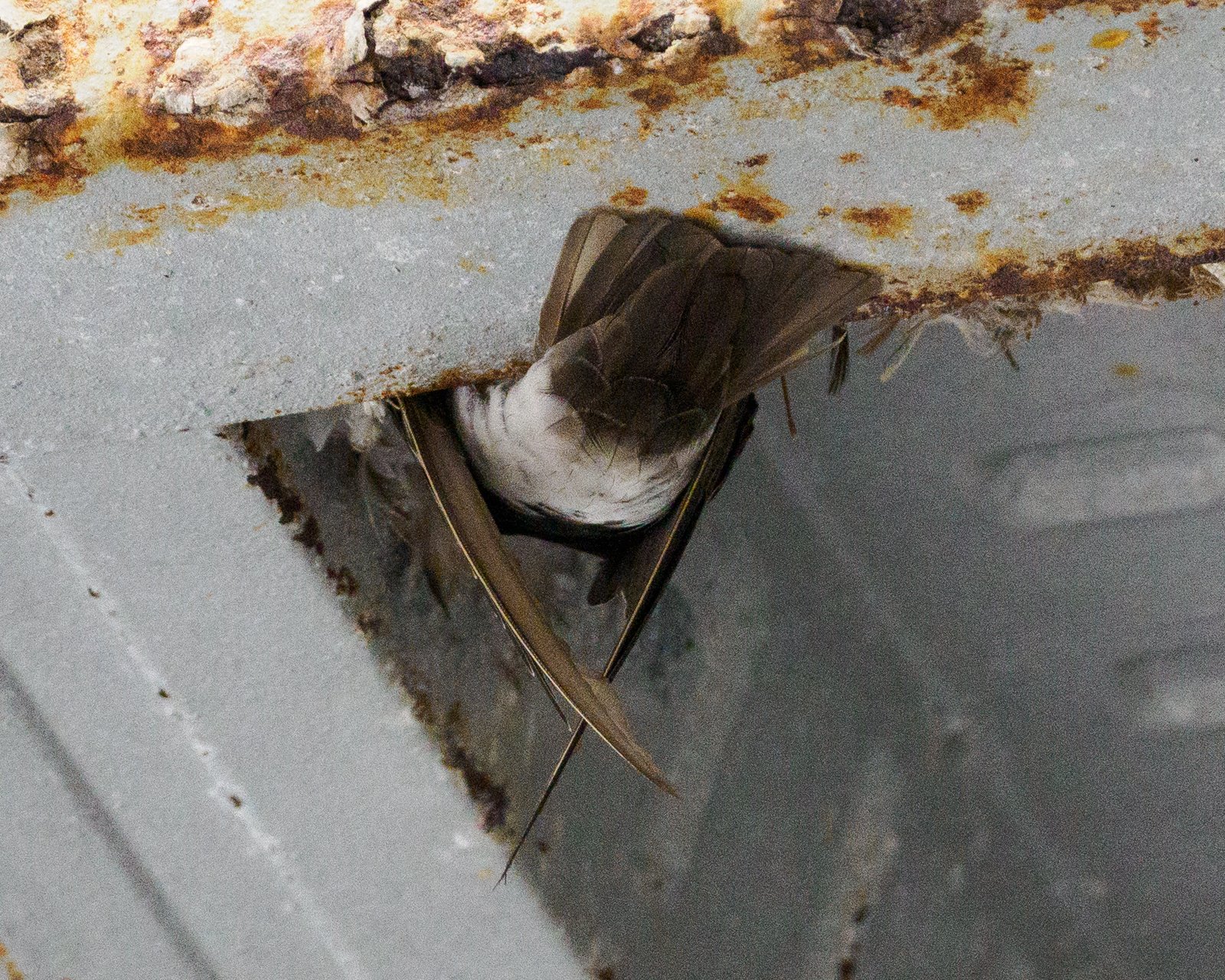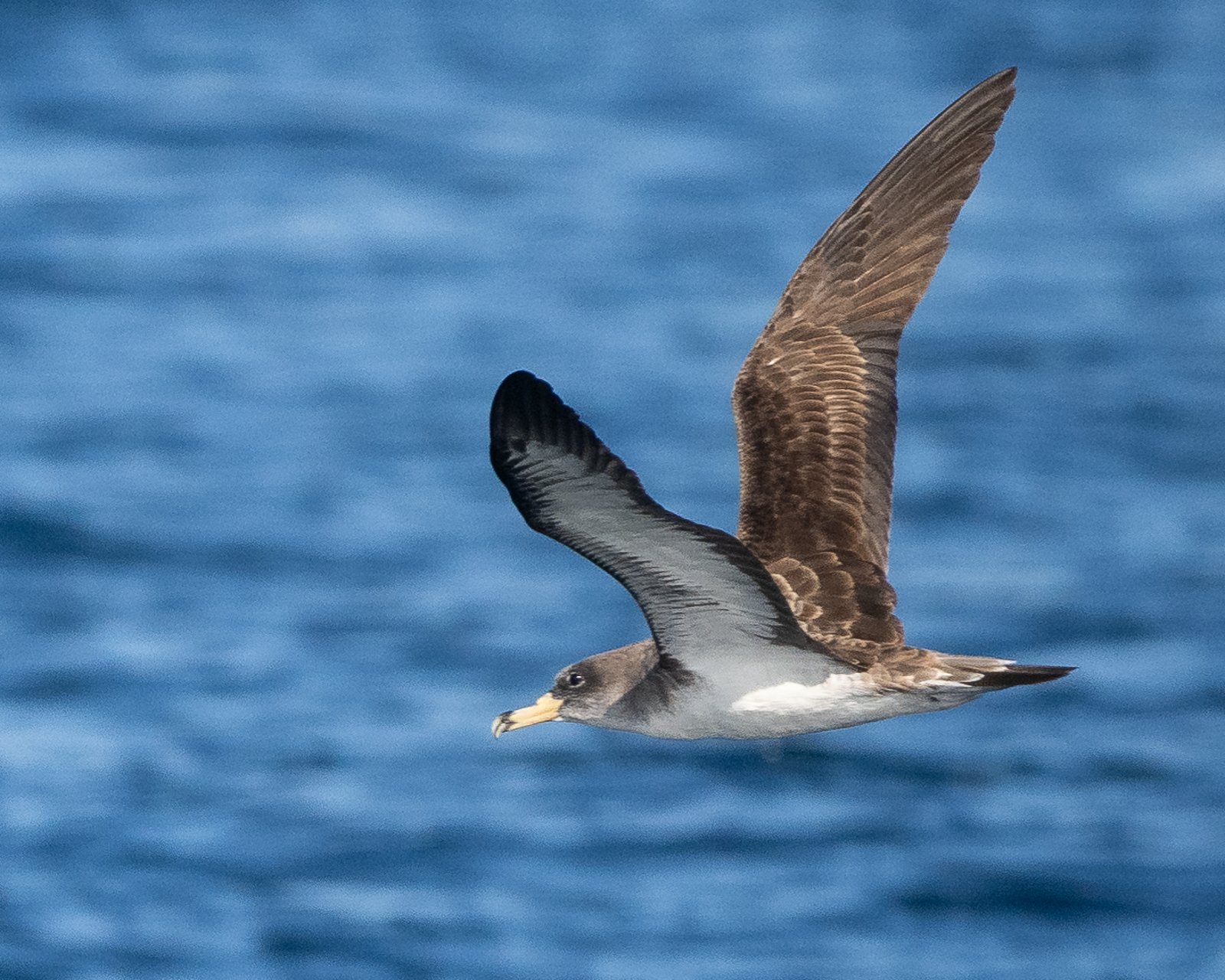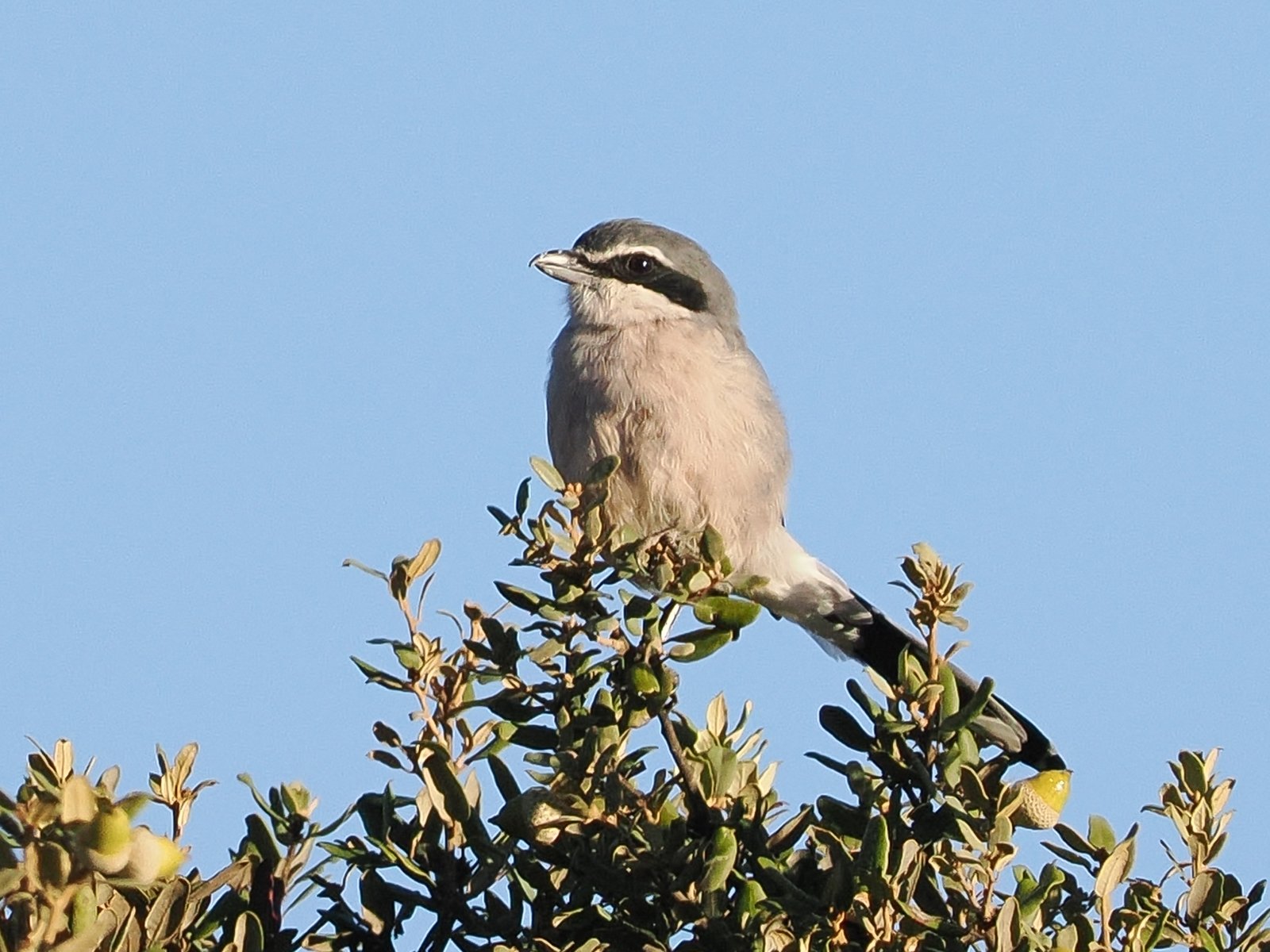Spain
Andalucia: Sierras and Strait
An 8-day, small group birdwatching tour to Andalucia, Spain
First run in autumn 2023, this new itinerary to southern Spain is timed to coincide with one of Europe’s greatest avian spectacles, the mass migration of birds of prey and storks over the Strait of Gibraltar. As well as experiencing the thrilling build-up of raptors waiting to cross to Africa, highlights of this superb Spain birding tour include a boat trip out of Tarifa in search of seabirds and cetaceans, a visit to the mouth of the famous Guadalquivir River looking for flamingos and both Marbled and White-headed Ducks. We will then spend two nights in the sierras near Ronda seeking Bonelli’s Eagle and Black Wheatear.
With migration underway, there is also the chance for some unexpected surprises and those on our 2023 holiday saw White-backed Vulture, two different Rüppell’s Vultures plus Elegant Tern and Northern Bald Ibis making for some fantastic bonus sightings!!
Join Limosa's English-speaking Spanish expert Fernando Navarrete for an exciting personal tour of his own ‘local patch’!!
Tour Dates & Prices
Tue 9th September 2025
Tue 16th September 2025
- Available
Tour Cost: 8 Days from £2495 excluding flights
What's Included?
- Limosa Tour Leader
- 7 nights accommodation in Spain (5 nights Tarifa, 2 nights Grazalema)
- All main meals
- Minibus transport
- Boat trip at Tarifa
- All excursions, entry fees and permits
- All tour-based tips and taxes
- Limosa checklist of birds
Cost Excludes
International flights, insurance, drinks, airport and in-flight meals and snacks and other items of a personal nature
Notes
The Land Only Tour Cost is the amount you will pay Limosa.
Despite the end of pandemic restrictions, we have taken the decision to continue to price our holidays as excluding international flights.
To keep the process as simple as possible, we are working very closely with a dedicated agent at Travel Counsellors, Sacha Barbato, who is essentially now our “in house” flight consultant.
Sacha is a highly experienced independent ATOL bonded travel agent, and his contact details are as follows: sacha.barbato@travelcounsellors.com and 01603 360099
He will be able to advise you which flights we are recommending for each holiday and will be able to book these for you.
This will also sometimes give you the option to travel from a regional airport if you prefer.
A second guide will join the holiday if there are more than seven clients on the tour.
Tour Highlights
- Peak period for the impressive annual migration of birds of prey over the Strait of Gibraltar
- Up to 20 species of raptors and vultures are possible including Rüppell’s and Griffon Vultures, Spanish Imperial Eagle, Honey Buzzard, Black Kite, Short-toed and Booted Eagles, Montagu’s Harrier and Osprey
- Five nights in the hills above Tarifa and two nights near historic Ronda
- Boat trip from Tarifa looking for Cory’s and Scopoli’s Shearwaters, Wilson's Storm-Petrel, Orca, dolphins and whales
- Chances for Bonelli’s Eagle, Red-necked Nightjar, Little Swift, Black Wheatear, Blue Rock Thrush
- The possibility of unexpected rarities with White-backed and Rüppell’s Vultures, Elegant Tern and Northern Bald Ibis all seen in 2023
- Small group tour - maximum of 12 participants
- Expertly led by our English-speaking Spanish specialist Fernando Navarrete who lives in Andalucia
Outline Itinerary
Fly to Malaga and transfer to our first hotel, just inland of the Strait. Night Tarifa
Watching migration from the Spanish shore and coastal sierras, plus visits to Salinas de Bonanza on the Guadalquivir River, La Janda, Barbate and Playa de Los Lances. Morning boat trip at Tarifa. Four further nights Tarifa
Transfer to the beautiful Sierra de Grazalema for two days of birdwatching around Ronda and the Sierra de Grazalema Natural Park. Ronda (2 nights)
We enjoy some final birding. Afternoon flight to the the UK

The southbound migration of birds of prey and storks across the Strait of Gibraltar in autumn has long been recognised as one of Europe’s greatest avian spectacles. This narrow stretch of water between the sierras of southernmost Andalucia (in Spain) and the coastal mountains of North Africa provides the shortest crossing over the Mediterranean and is less than 9 miles at the closest point. As a result, huge numbers of migratory soaring birds from all over Europe congregate here to make the crossing every autumn.
This exciting tour begins at Tarifa, which sits at the most southerly tip of the Spanish mainland and from where the mountains of Morocco are clearly visible across the sea. After exploring the best raptor watchpoints and coastal wetlands and enjoying spectacular views over the Strait, we head inland to beautiful Ronda, still with a view to watching migration, but also to explore the limestone landscapes close to this picturesque and historic Spanish town.
The middle of September sees the peak passage, with birds of prey funnelling down from the hills to local migration ‘hotspots’. When conditions are right, parties of Honey Buzzards, Black Kites and Short-toed Eagles rise up above the wooded coastal sierras in search of the thermals that will give them lift. Our anticipation will grow as the first distant dots appear, gradually metamorphosising into an assortment of different shapes and sizes, discernible as birds of prey as they glide ever nearer. Soon they are with us and at times, some may pass so close we can even see the expression on their faces! Egyptian and Griffon Vultures, Hobbies and Sparrowhawks, Bonelli's and Booted Eagles, Montagu’s and Marsh Harriers, all pass this way, gathering in readiness for the crossing to the Moroccan shore. With them come flocks of White Storks and often a sprinkling of scarcer Black Storks, all seeking to gain height before streaming out across the waters of the Strait.
Each day will be different, as the presence of soaring birds is influenced by the prevailing winds. On days when the winds are 'not right', there is much to see elsewhere in this bird-rich corner of Spain with Red-necked Nightjar, Sardinian Warbler, Hoopoe and Iberian Grey Shrike among a wealth of Mediterranean species to look for. We might also be lucky enough to find one or two of the region’s rarer inhabitants and over our many previous visits to Andalucia, Limosa groups have seen Northern Bald Ibis, Lesser Crested Tern, Little Swift, Spanish Imperial Eagle, Black-winged Kite and even Rüppell’s Vulture!
But southern Andalucia is not all about raptor migration, as there are also many great wetlands. Taking a day trip west to the mouth of the Guadalquivir River, we will visit saltpans and lakes that are home to some of the most iconic and sought-after species of the region including Red-knobbed Coot, Marbled and White-headed Ducks, Audouin’s Gull and Greater Flamingo.
If the sea conditions permit, a boat trip out of Tarifa offers a great opportunity to get close to seabirds including both Cory’s and Scopoli’s Shearwaters, and maybe a few Wilson's Storm-Petrels and Balearic Shearwaters. Cetaceans such as Orca, Bottlenose Dolphin and Long-finned Pilot Whale are also possible.
After five nights close to the coast, we travel north for a couple of hours to spend our final two nights amid the beautiful limestone mountains of the Sierra de Grazalema. As well as enjoying birdwatching here, we may also pay a visit to the historic and hugely scenic hilltop town of Ronda that sits astride El Tajo, a deep chasm carved by the Río Guadalevín. Here, Bonelli's Eagle, Blue Rock Thrush and the localised Black Wheatear are among a wealth of upland birds to look for.
With the tour running during the peak of the migration season, there is also a great chance for unexpected vagrants with White-backed Vulture, two different Rüppell’s Vultures plus Elegant Tern and Bald Ibis all seen on our 2023 departure.
Fernando Navarrete is Limosa's English-speaking Spanish specialist and our ‘man on the spot’. His own home is just a stone's throw along the coast from Tarifa, where we start our tour and his intimate local knowledge of the fickle winds, weather patterns and local birding sites during this, the peak period for raptor and stork migration in autumn, will prove invaluable on this exciting tour. During our stay, we will no doubt also try a couple of Fernando’s favourite local restaurants for lunch as tapas is always a treat!
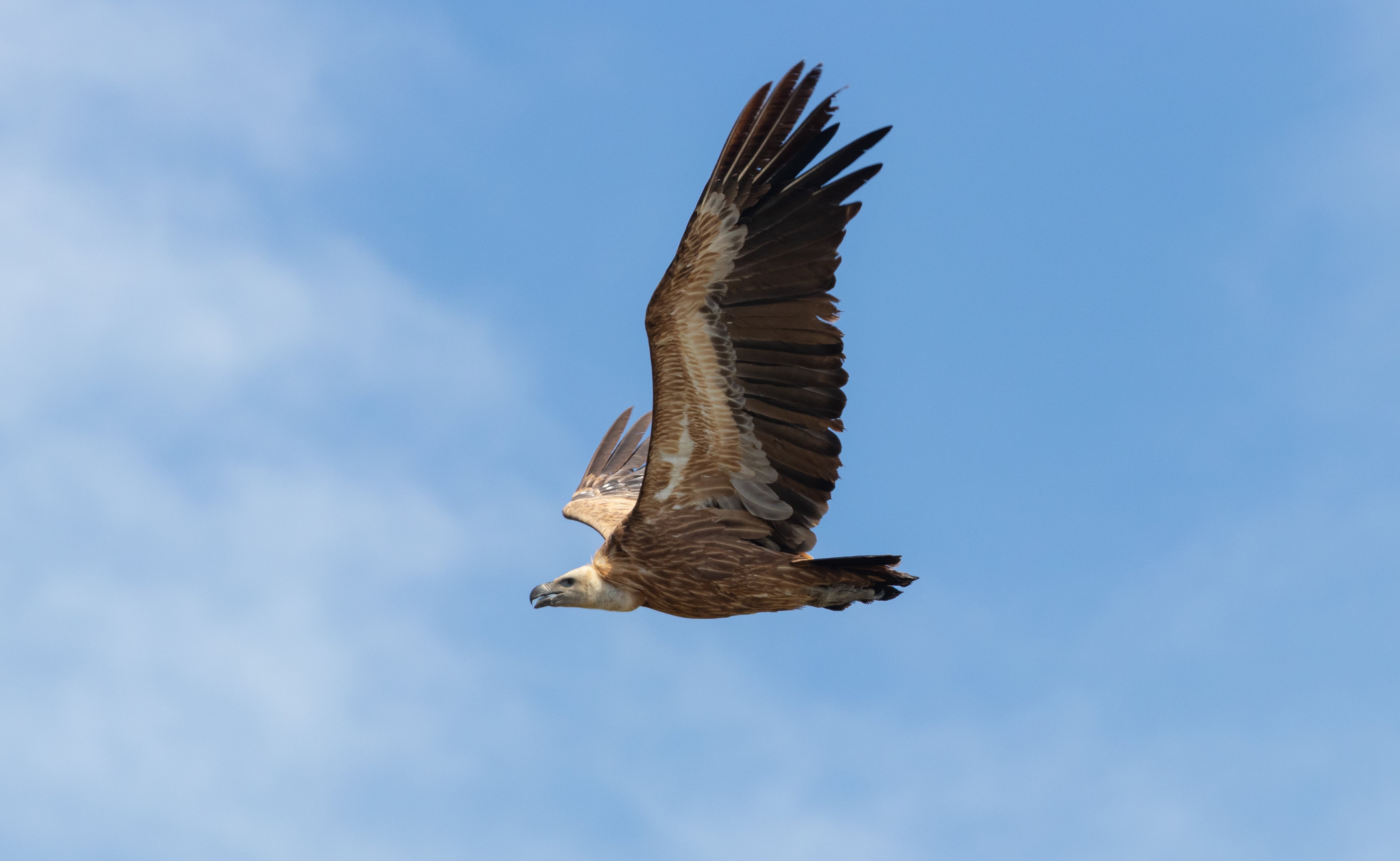
Day 1
FLY TO MALAGA AND TRANSFER TO TARIFA
Our autumn birdwatching tour to Spain and Morocco begins with a flight to Malaga where Fernando will be waiting to welcome us. We then transfer along the Mediterranean coast towards Tarifa which should take less than two hours.
Our eyes will soon turn skyward as we scan eagerly for our first ‘kettles’ of birds of prey and storks gathering over the rugged Spanish coast and the wooded sierras beyond. This is one of the great migration corridors of Europe and in autumn, huge numbers of birds, especially notably raptors and storks, congregate here to take advantage of the narrowest crossing over the Strait of Gibraltar into Africa.
Situated well away from the Spanish costas and overlooking both the Mediterranean and Spain’s less developed Atlantic coast, the Tarifa area will be our base for the first five nights of our tour. Night near Tarifa
Days 2 - 5
THE STRAIT OF GIBRALTAR AND RAPTOR WATCHPOINTS, COASTAL SIERRAS, BARBATE, LA JANDA AND GUADALQUIVIR RIVER MOUTH
Our itinerary in this delightful corner of Andalucia will remain flexible to take best advantage of the prevailing weather. We have chosen the optimum dates for our tour, when the raptor migration is usually at its peak, and will spend time looking for these species, as well as exploring the coastal sierras, woods and wetlands, north and west to the Guadalquivir.
If conditions are right, we will make raptor watching a priority, ensuring we are in position to witness peak passage of the day’s crop of southbound migrants. With a westerly edge to the wind, we will want to be in the Gibraltar area, where the spectacular slopes of 'The Rock' itself offer an impressive backdrop to our birding. If the winds have an easterly origin, however, birds of prey will be pushed further west and we will then station ourselves in the hills between Fernando's hometown of Algeciras and Tarifa, so as to get the best possible views.
Choosing one of the prime watchpoints, Punta Carnero, Algarrobo, Punta Camorro or Cazalla, we will soon be getting to grips with birds of prey of all shapes and sizes as they stream towards the Strait. From mighty Griffon Vultures to elegant Montagu’s Harriers and dashing Hobbies, the middle of September sees the peak of raptor passage and we should have a grandstand view of the fascinating spectacle that unfolds before us.
As they seek to gain height in preparation for the sea crossing from Europe to the mountains of North Africa, birds of prey may suddenly appear low over our heads, even occasionally passing us at eye level, as they hunt for the next thermal that will give them lift. On the best migration days, hundreds of raptors, especially Short-toed and Booted Eagles can fill the sky, along with Black and White Storks, Egyptian Vultures and Sparrowhawks. As we watch and wait for the next ‘wave’ to appear, we may spot a Sardinian Warbler and migrants such as Hoopoe and Redstart skulking in the low scrub.
We will combine our watches over the Strait with an exploration of the wider Andalucian countryside where picturesque wooded valleys cut through the low limestone sierras, clad in dense stands of Evergreen Oak and set amidst more open slopes of sheep-grazed turf and scrub.
Birds of prey are again the stars, with a sizeable resident population of Griffon Vultures plus good chances of Bonelli’s and Golden Eagles, Goshawk and Common Buzzard, while Hobbies and Short-toed Eagles drift lazily through on passage. In recent years, we have even managed to find the odd Rüppell’s Vulture, a rare and recent arrival from tropical Africa.
In comparison to the vultures, the Crag Martins that swirl about the towering limestone bluffs appear minuscule, as we check the steady stream of southbound migrants for scarcer species such as Red-rumped Swallow and Alpine Swift.
Firecrest, Short-toed Treecreeper, Crested Tit and Hawfinch are among woodland residents to look for, while the more open slopes afford wonderful panoramic views as we scan for Woodlark, Black Redstart and Cirl Bunting. Add the prospect of Thekla Lark, Blue Rock Thrush and any number of migrants that could be present at this time of year and we are assured of an exciting few days!
Fernando’s intimate knowledge of ‘his own backyard’ should pay dividends in our quest to see the localised Black-winged Kite, while another possible September highlight is the Red-necked Nightjar, which we will hope to find with a bit of patient searching.
A little to the northwest of Tarifa lies the flat plain of La Janda. Once an immense, seasonally flooded lagoon where cranes and other wetland birds bred in abundance, the area nowadays lies mostly under agriculture. Nevertheless, it is still an important habitat for birds with the fields crisscrossed by a network of canals and reedy dykes harbouring a fine array of species. Glossy Ibis, White Stork, Iberian Grey Shrike and Calandra Lark are likely, as migrating Marsh and Montagu’s Harriers sail across the fields. We have occasionally seen the very rare Spanish Imperial Eagle hunting here too!
The port of Barbate offers another change of habitat, as its extensive saltpans are favoured by Little Egrets, Avocets and Black-winged Stilts, as well as Gull-billed and Caspian Terns. Zitting Cisticolas (or Fan-tailed Warbler in old money) ‘zip’ incessantly as we check the lagoons and tidal mud for passage waders. We might even encounter the weird Northern Bald Ibis, small numbers of which have recently been reintroduced into this corner of Spain in a bid to bolster the beleaguered wild population in southern Morocco.
Northwest of Tarifa, where the Rio Guadalquivir meets the sea, is one of the most productive birding spots in Andalucia. Many of the species for which the Coto Donana National Park is famous can be found just as easily here. This rewarding area comprises a fine mix of habitats from saltpans, open wetlands and small freshwater lagunas to farmland and pinewoods and all of these hold an excellent diversity of species. Little Swifts have spread here from North Africa, and the Salinas de Bonanza is a reliable spot for Greater Flamingo, Spoonbill, Kentish Plover and Black-winged Stilt, along with Curlew Sandpiper, Little Stint and other autumn shorebirds. T his area can also be good for terns with Little, Gull-billed, Whiskered and Caspian among species we hope to find.
Nearby, tucked away freshwater lakes are the haunt of iconic and sought-after Spanish specialities such as Red-knobbed Coot, Marbled Duck and the odd White-headed Duck.
If the weather permits, we will take a whale-watching boat trip out from Tarifa. In September, cetaceans are largely made up of Bottlenose Dolphins and Long-finned Pilot Whales, but we should also encounter seabirds heading out of the Mediterranean into Atlantic waters. These could include Wilson's Storm-Petrel as well as Balearic and Scopoli’s Shearwaters, plus a chance to see the latter alongside the very similar Cory’s Shearwater. Gannets, gulls and terns are also likely which in turn can attract any passing Arctic and Great Skuas in search of an easy meal.
The enticing beach of Playa de Los Lances extends northwest from Tarifa, presenting a long, sweeping bay of golden sand. Surprisingly, it can often be almost devoid of people at this time of year. A freshwater outlet running across the sands attracts a regular gathering of gulls and terns. Yellow-legged Gulls are numerous but we should also find the more localised Audouin’s Gull, whilst terns could include the rare Lesser Crested Tern. Sanderlings scamper along the tideline and Ringed and Grey Plovers feed beside the resident Kentish Plovers, while the dunes behind are good places to look for Crested Lark and migrant Yellow Wagtails. Four further nights near Tarifa
Days 6 - 7
RONDA AND THE SIERRA DE GRAZALEMA
If there is one place in this corner of Andalucia that you must visit, it is Los Llanos de Libar, in the beautiful Sierra de Grazalema Natural Park and today we travel northeast from Tarifa to enjoy a two-night stay there, close to the historic and impressively scenic town of Ronda.
Over many centuries, Iberians, Greeks, Phoenicians, Carthaginians, Romans, Visigoths and Arabs have all left their mark on this town, with its white painted walls and terracota roof tiles. The dramatic, 100 metre deep El Tajo Gorge divides the town into two, with the old town standing on the southern edge. Bridges and watchpoints over the river afford incomparable views of birds such as Lesser Kestrel, Red-billed Chough, Blue Rock Thrush and Rock Sparrow.
As we head northeast, we will stop along the way and spend time birding in the Guadiaro valley. In September, we still have a chance of finding Iberian Chiffchaff and Golden Oriole, while at the Cueva del Gato, there is a spectacular Alpine Swift colony. In autumn, these magnificent birds can be seen sweeping about the cave entrance and cliffs.
Close to Ronda, the Libar range consists of two karst limestone ridges that run in a north-south direction, helping to funnel birds of prey down towards the Strait in autumn. At this time of the year, migration should be in full swing and this whole area is not only an excellent ‘migration corridor’, but also a great location to find some of the resident bird specialties of the area.
We will also look for the declining Bonelli's Eagle which cruises the cliff faces, where Black Wheatears, Blue Rock Thrush and Rock Sparrow can also be seen. Dartford Warbler, Iberian Grey Shrike and Rock Bunting prefer scrubbier habitats and are often located by their calls. Adding to our enjoyment, lunches for these two days will be taken at local restaurants serving traditional food. Two nights Ronda
Day 8
RETURN TO MALAGA, FLY TO UK
We should have time to enjoy some final birding either locally near Ronda or as we travel back southeast (less than two hours) to Malaga airport.
Evening arrival back in the UK, where our birding tour to Spain concludes.

WHAT TO EXPECT
Our September birdwatching tour to southern Spain is timed to coincide with one of Europe’s greatest avian spectacles, the mass migration of birds of prey and storks over the Strait of Gibraltar.
As well as experiencing the thrilling build up of raptors waiting to cross the waters to Africa, other tour highlights include a boat trip out of Tarifa in search of seabirds and cetaceans, a visit to the mouth of the famous Guadalquivir River for flamingos and terns, plus the chance of Marbled and White-headed Ducks. We will also spend two nights in the scenic Sierra de Grazalema near Ronda, seeking Bonelli’s Eagle and Black Wheatear.
Southern Spain enjoys a Mediterranean climate and in mid-late September, the weather in southern Spain is usually warm and sunny, with clear blue skies and temperatures in the range of 23-28C (73-82F). It is likely to be cooler in the evenings and at night, and it can feel fresh on the coast, especially if an onshore breeze is blowing. Rainfall is generally low at this season, but infrequent heavy downpours can occur at any time of year.
BIRDS
130-160 species
ACCOMMODATION
Seven nights accommodation at hotels in southern Spain. All rooms are en suite.
We spend the first five nights at a comfortable hotel near Tarifa, in an ideal location for the passage of migrating birds of prey and storks over the Strait.
We follow that with two nights near the town of Ronda, in the lovely Sierra de Grazalema.
MEALS
All main meals are included in the tour price, commencing with dinner in Spain on Day 1 and concluding with lunch there on Day 8.
Our evening meals and breakfasts will be taken at the hotels. Lunches will be a mix of light, sit-down cafe meals and picnics, whichever best suits our daily plan.
WALKING
Easy. Short walks interspersed with periods sitting, watching and waiting for migrating birds of prey and storks to appear over the Strait. Sturdy waterproof walking shoes or lightweight boots with rugged soles for grip are advised.
TRAVEL
Despite the end of pandemic restrictions, we have taken the decision to continue to price our holidays as excluding international flights.
To keep the process as simple as possible, we are working very closely with a dedicated agent at Travel Counsellors, Sacha Barbato, who is essentially now our “in house” flight consultant.
Sacha will be able to advise you which flights we are recommending for each holiday, and he will be able to book these for you.
This will also sometimes give you the option to travel from a regional airport if you prefer.
Ground Transport By minibus or other suitable transport (depending on group size).
BOAT TRIPS
Our tour cost includes a morning or afternoon boat trip (weather permitting) in search of seabirds and cetaceans, out from Tarifa into the Strait of Gibraltar aboard a local whale-watching boat.
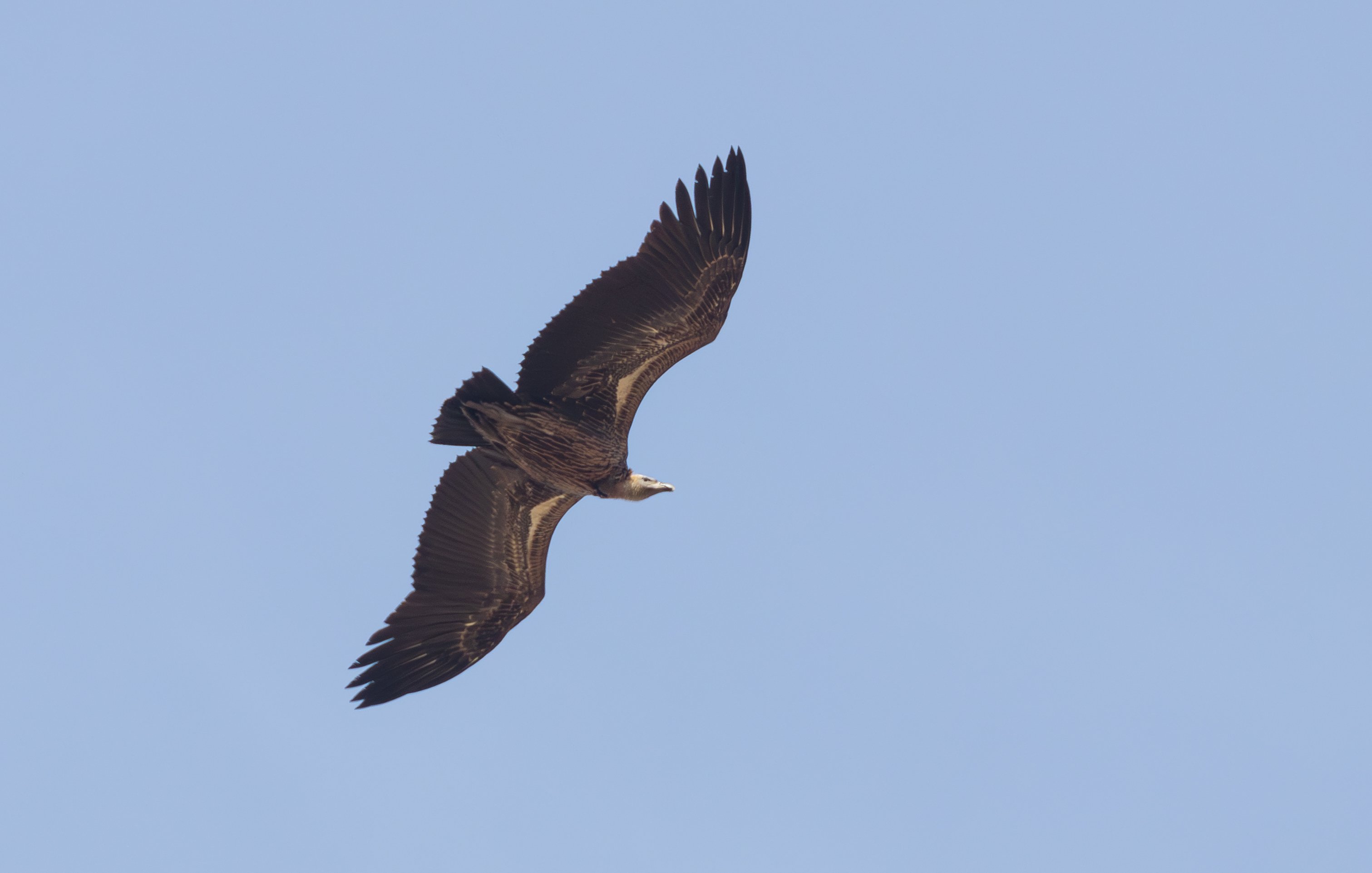
Tour Gallery
View a gallery of images for this tour below, click on an image to view as full size with caption


